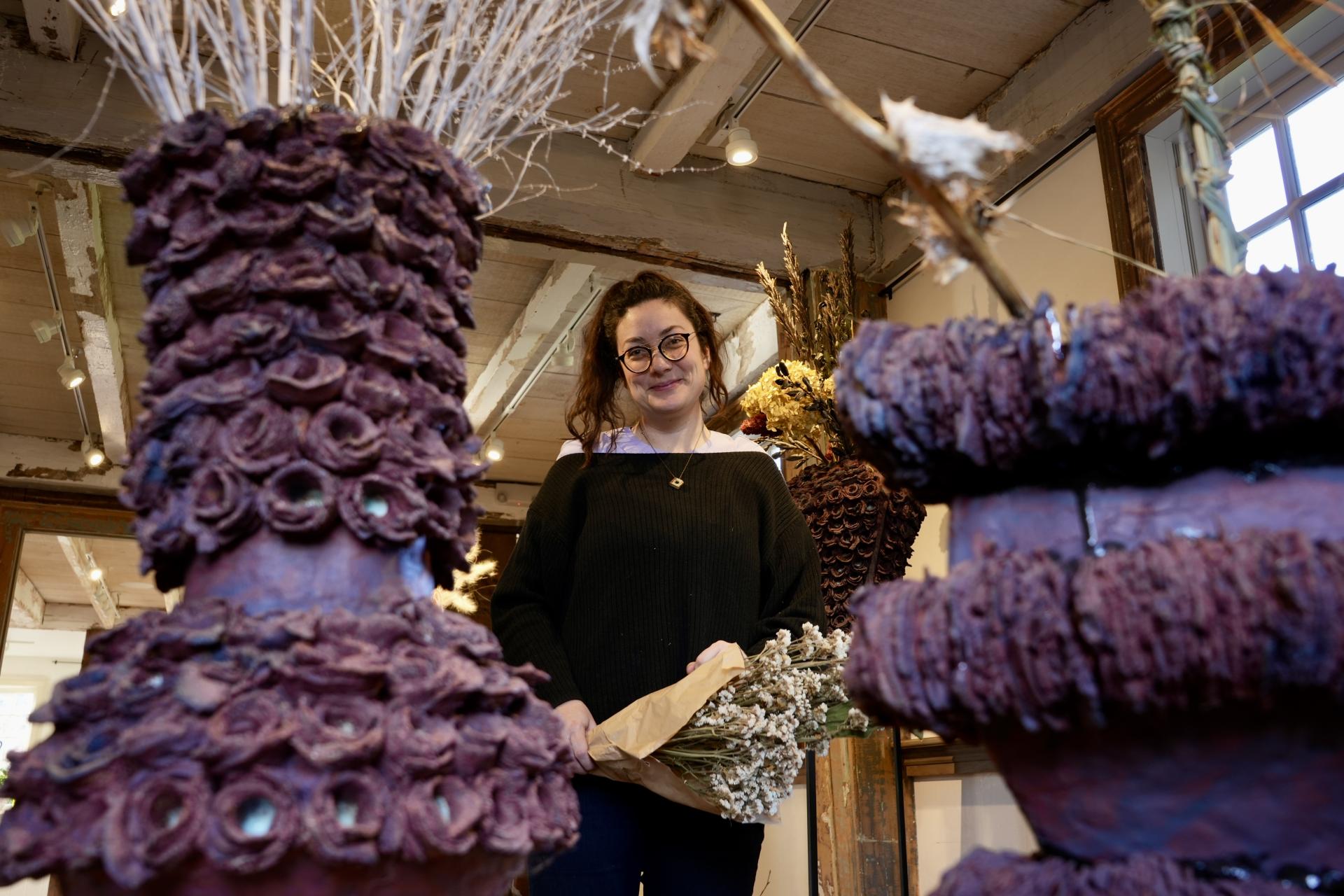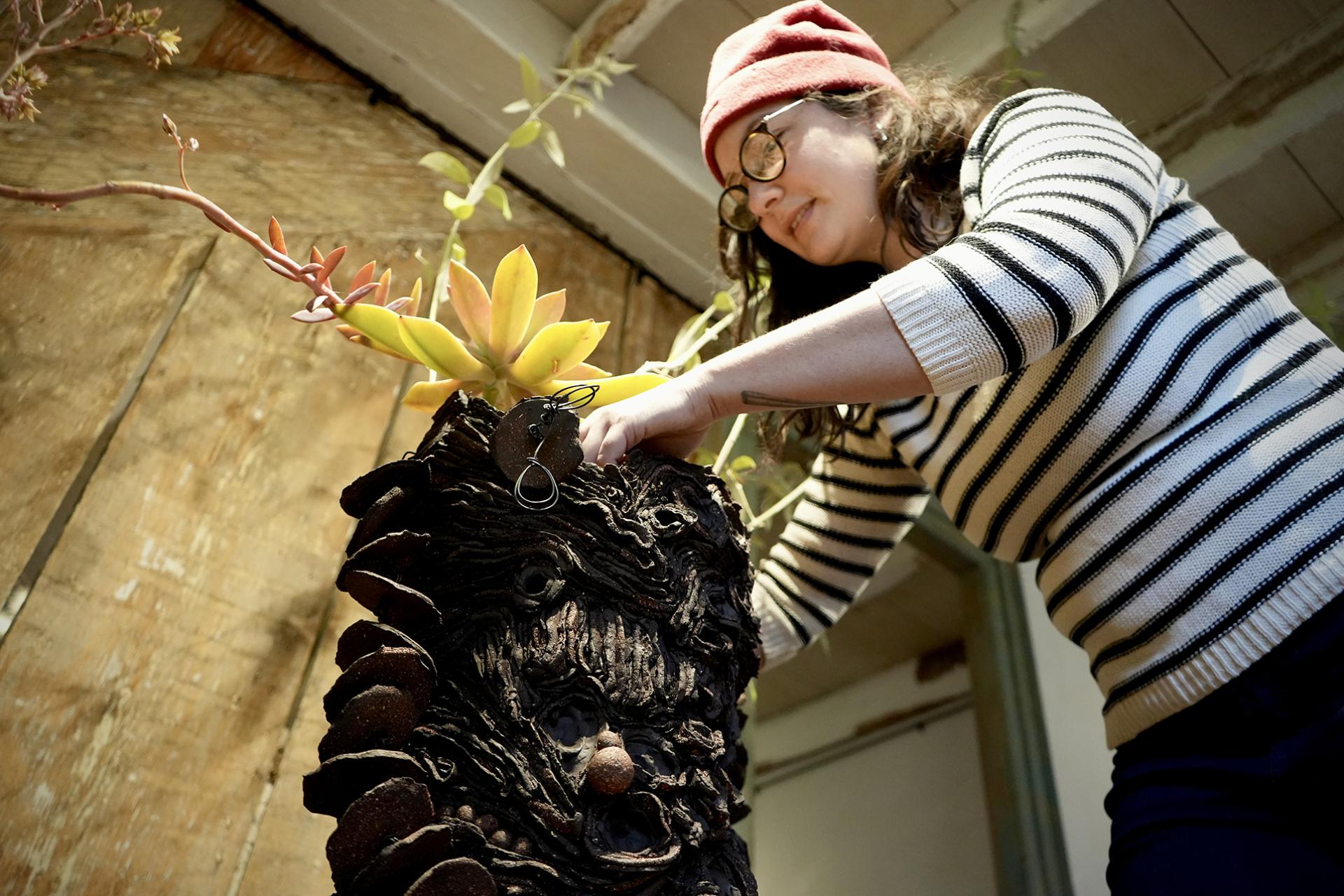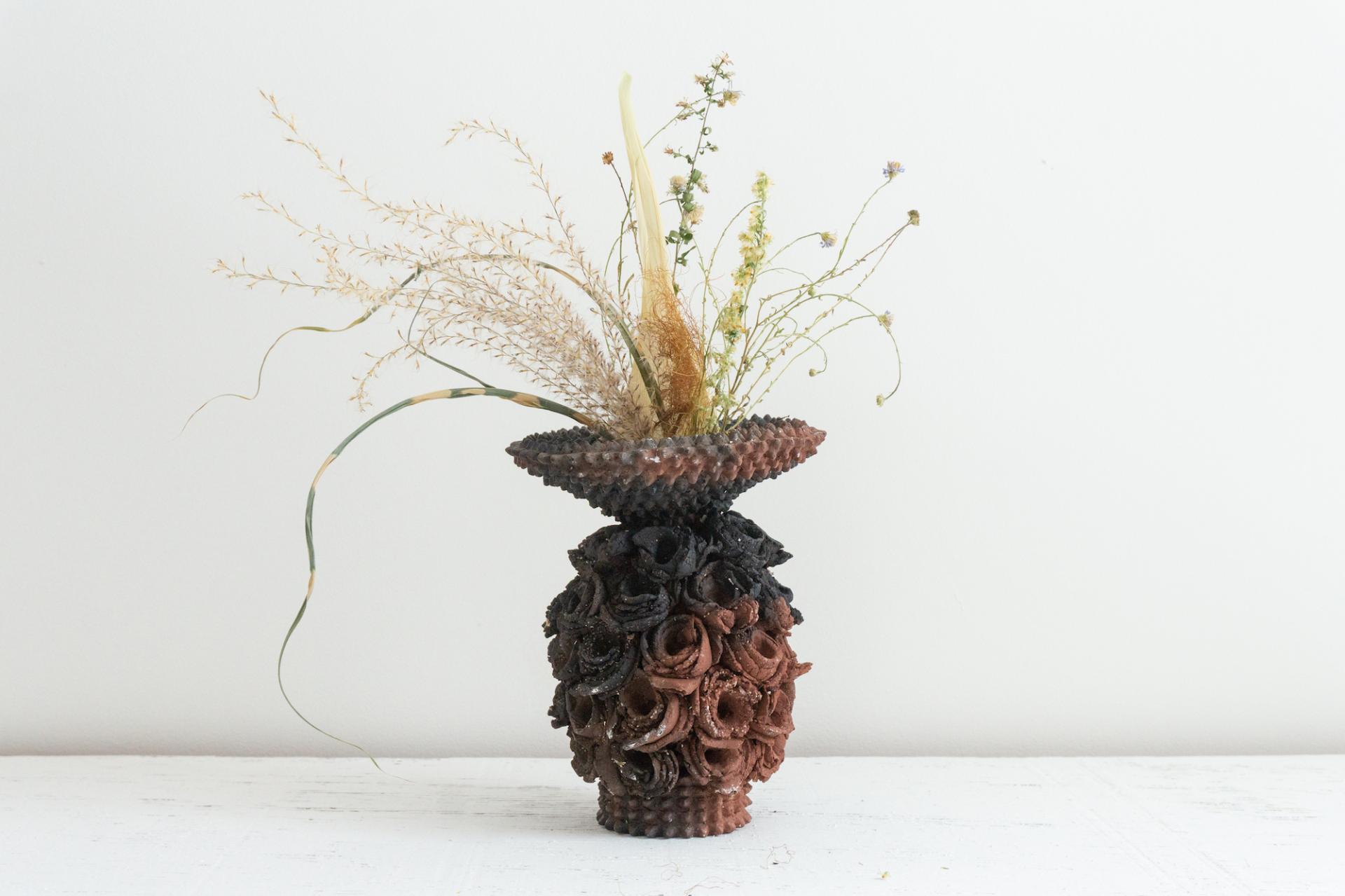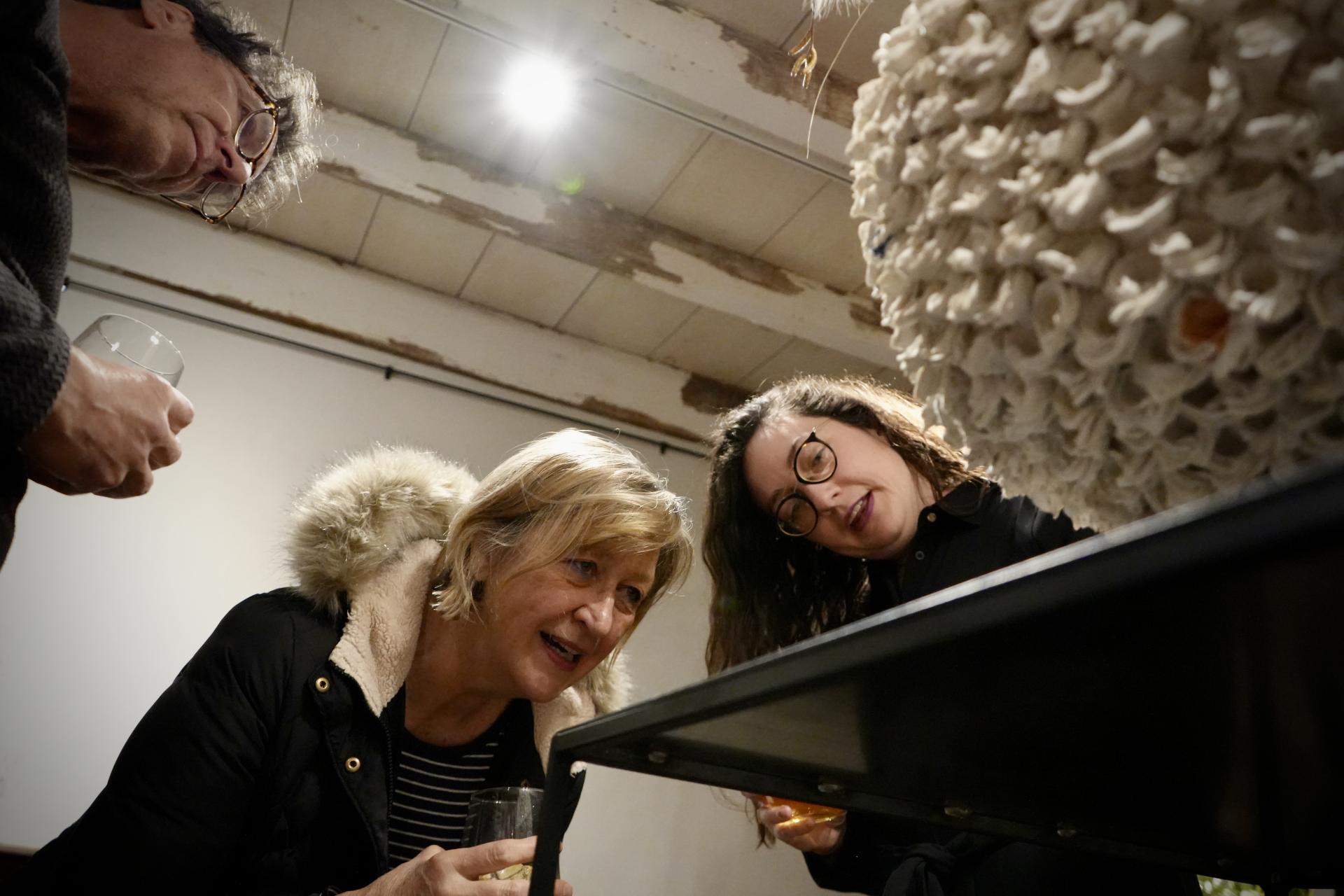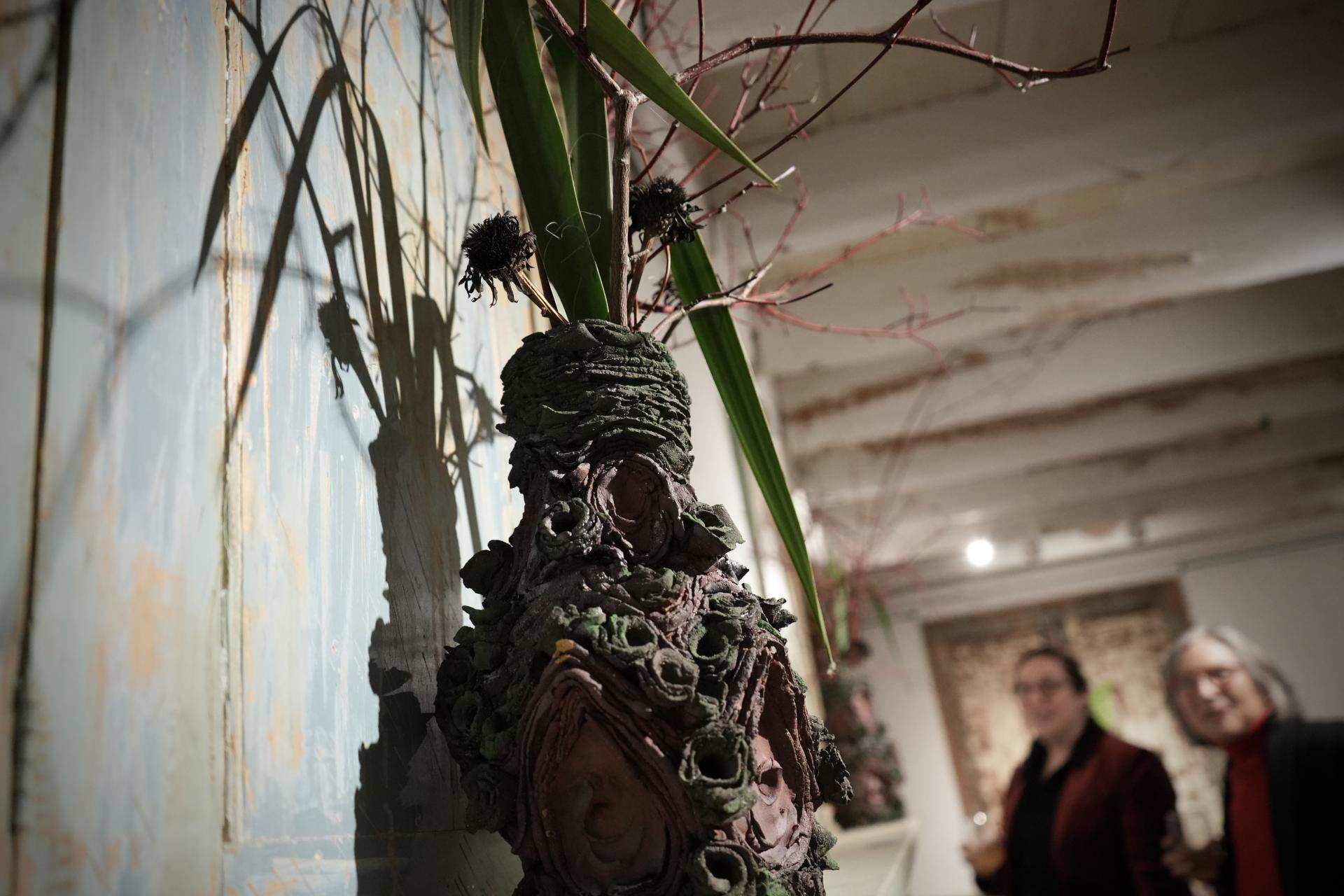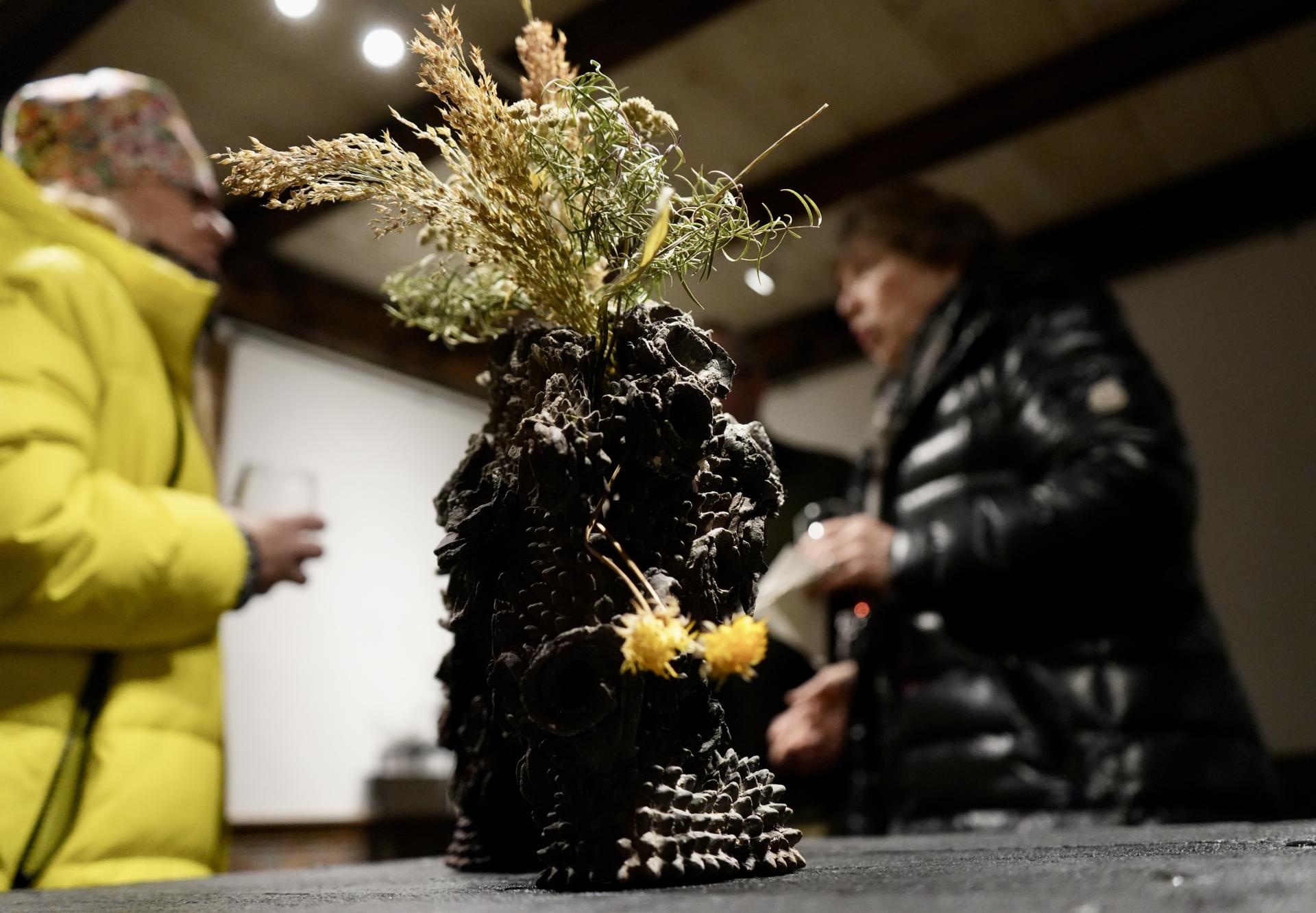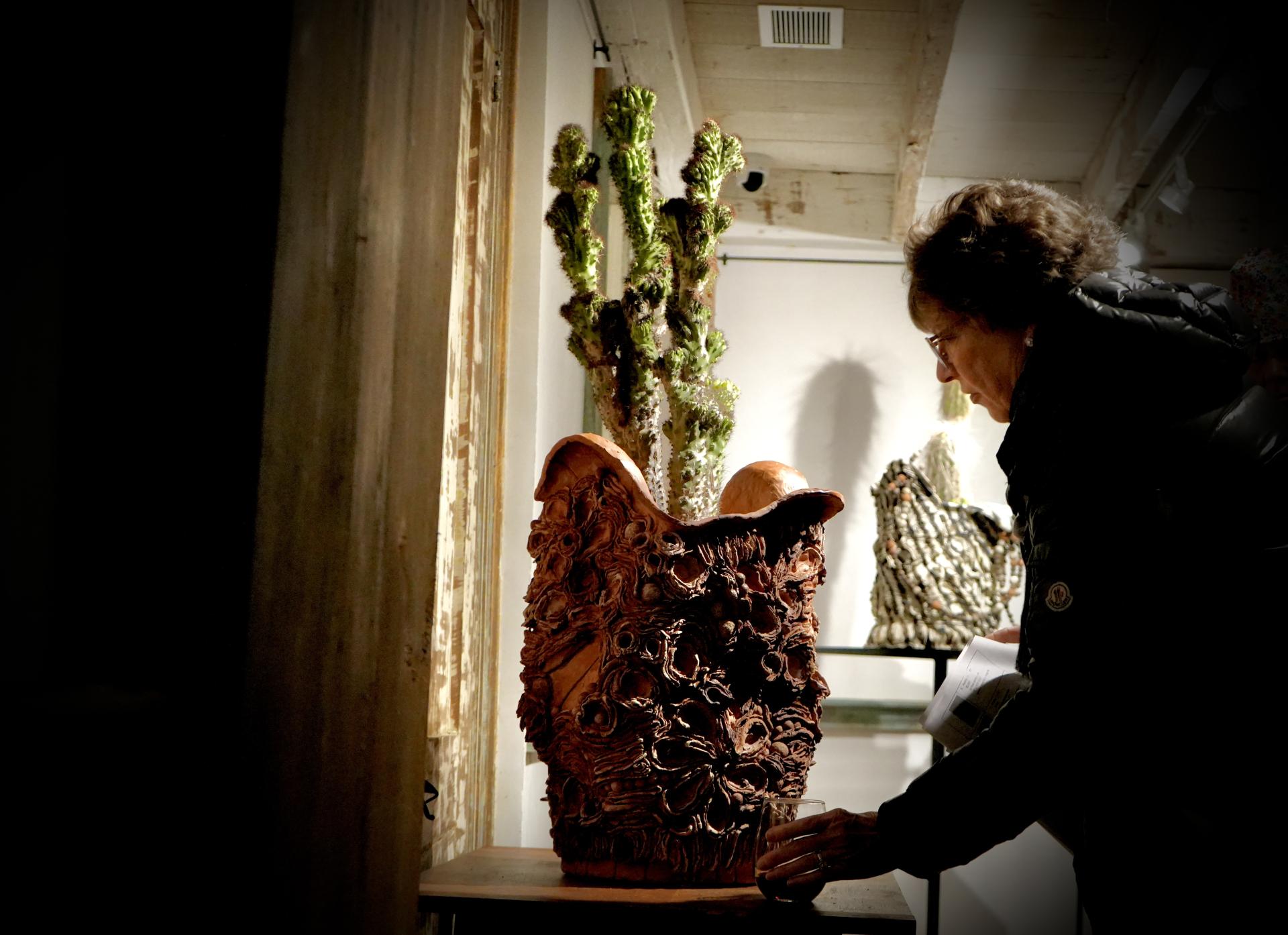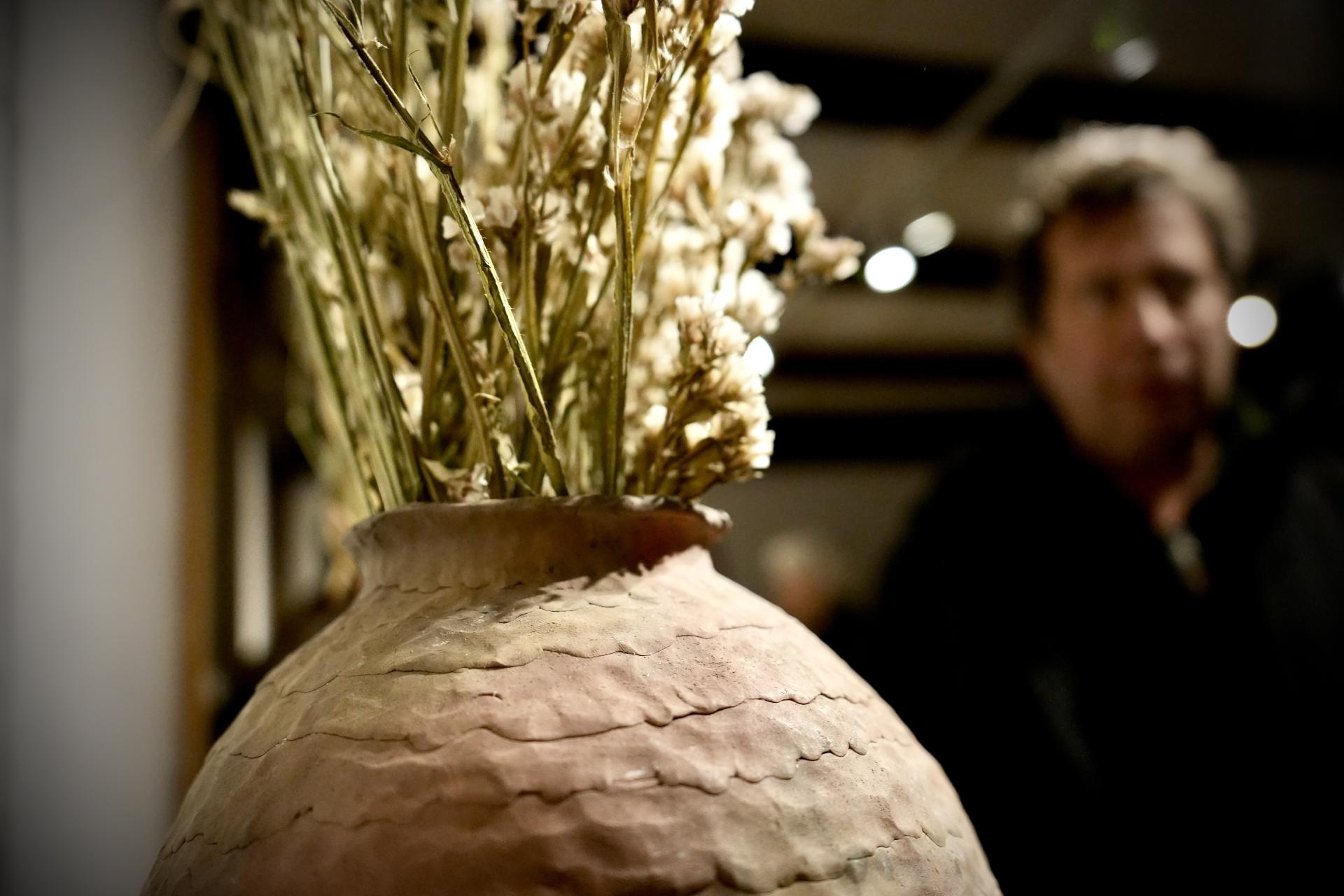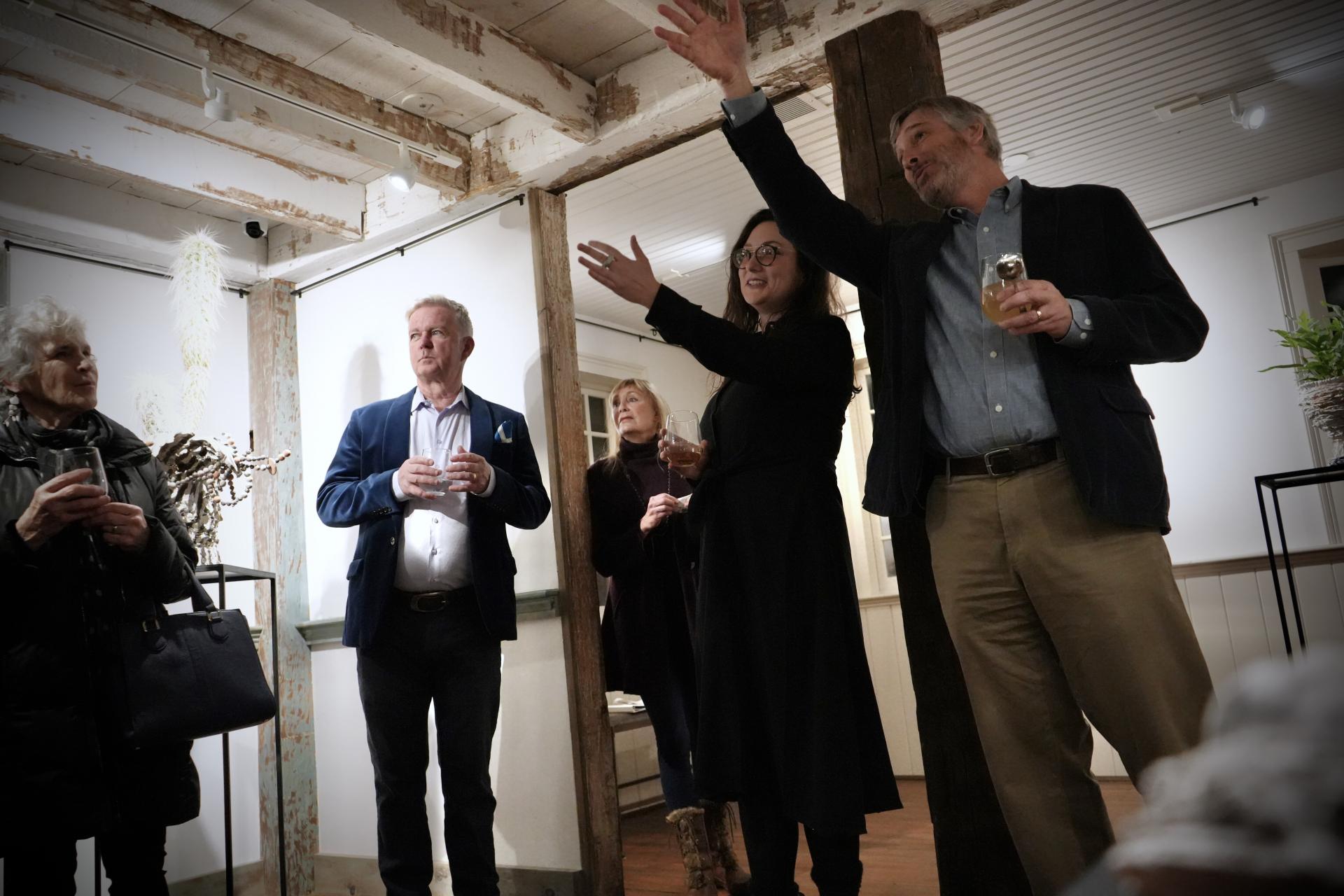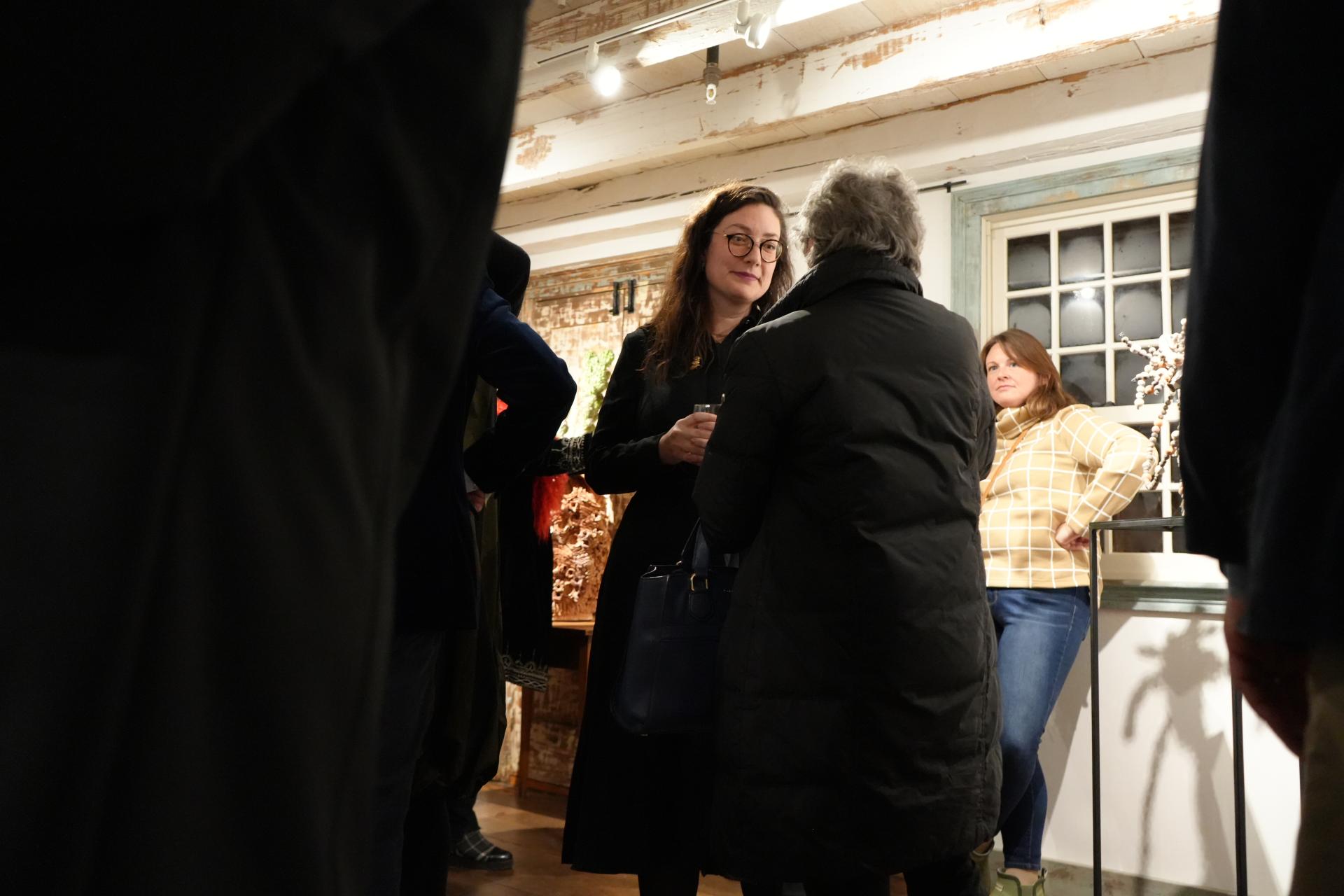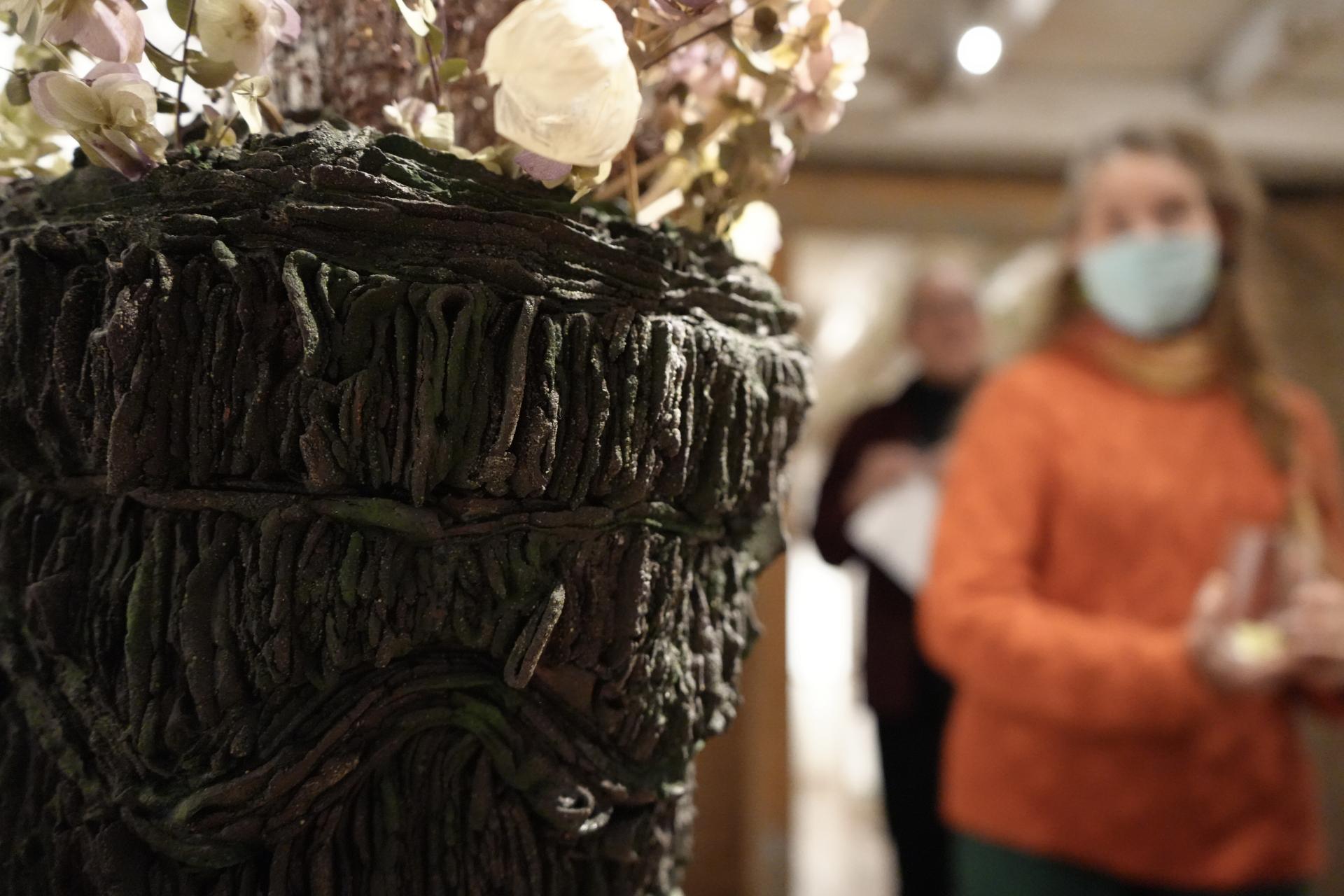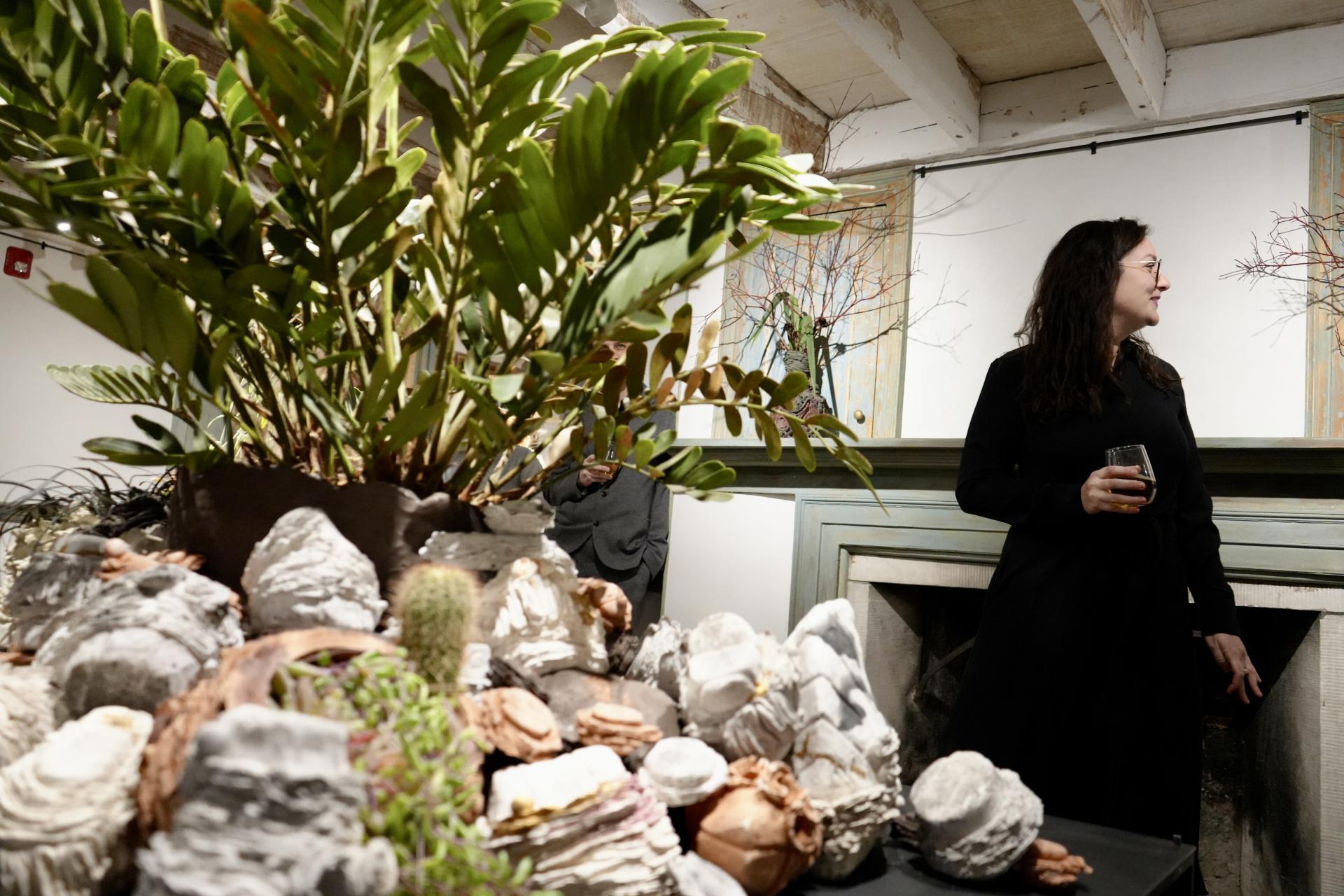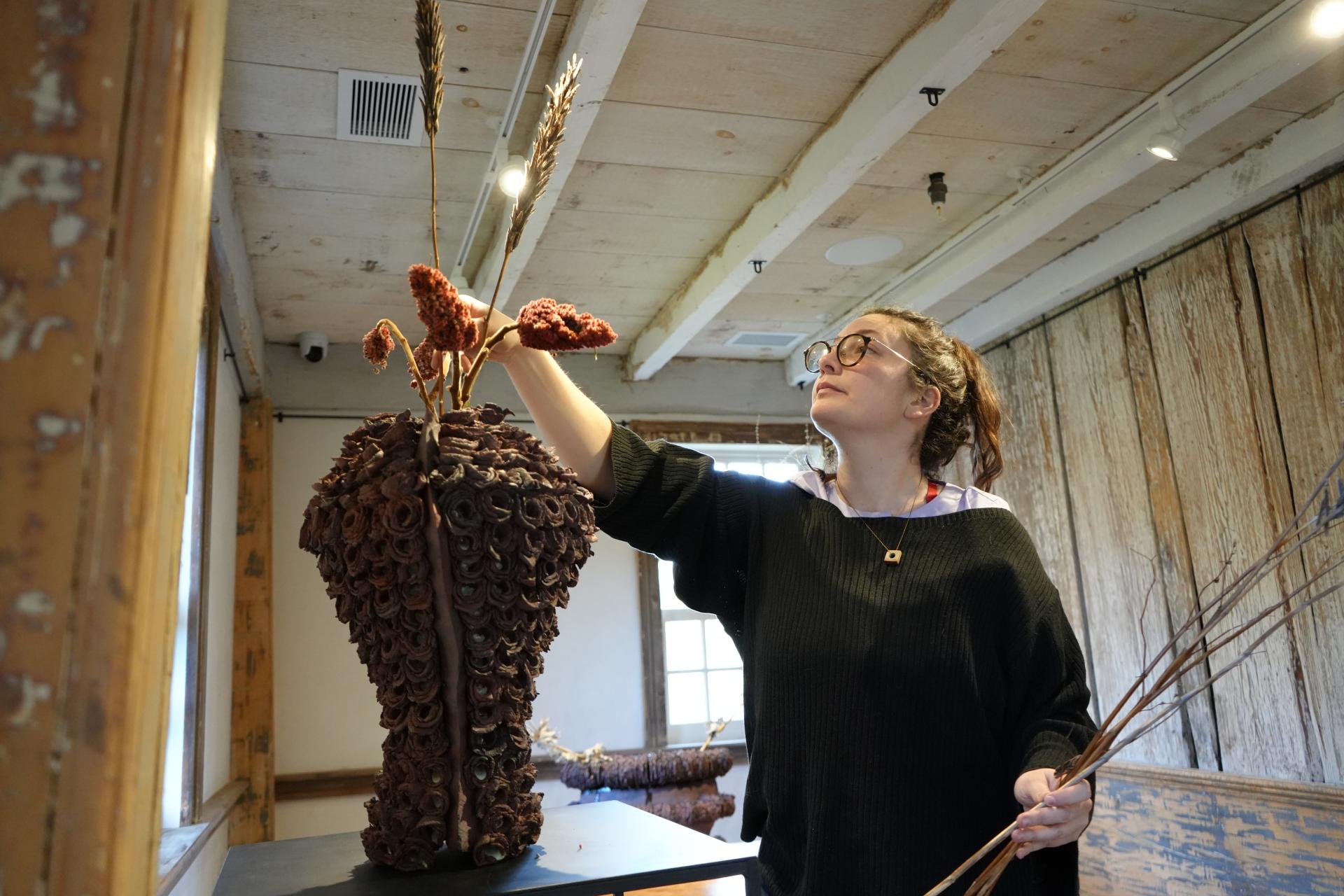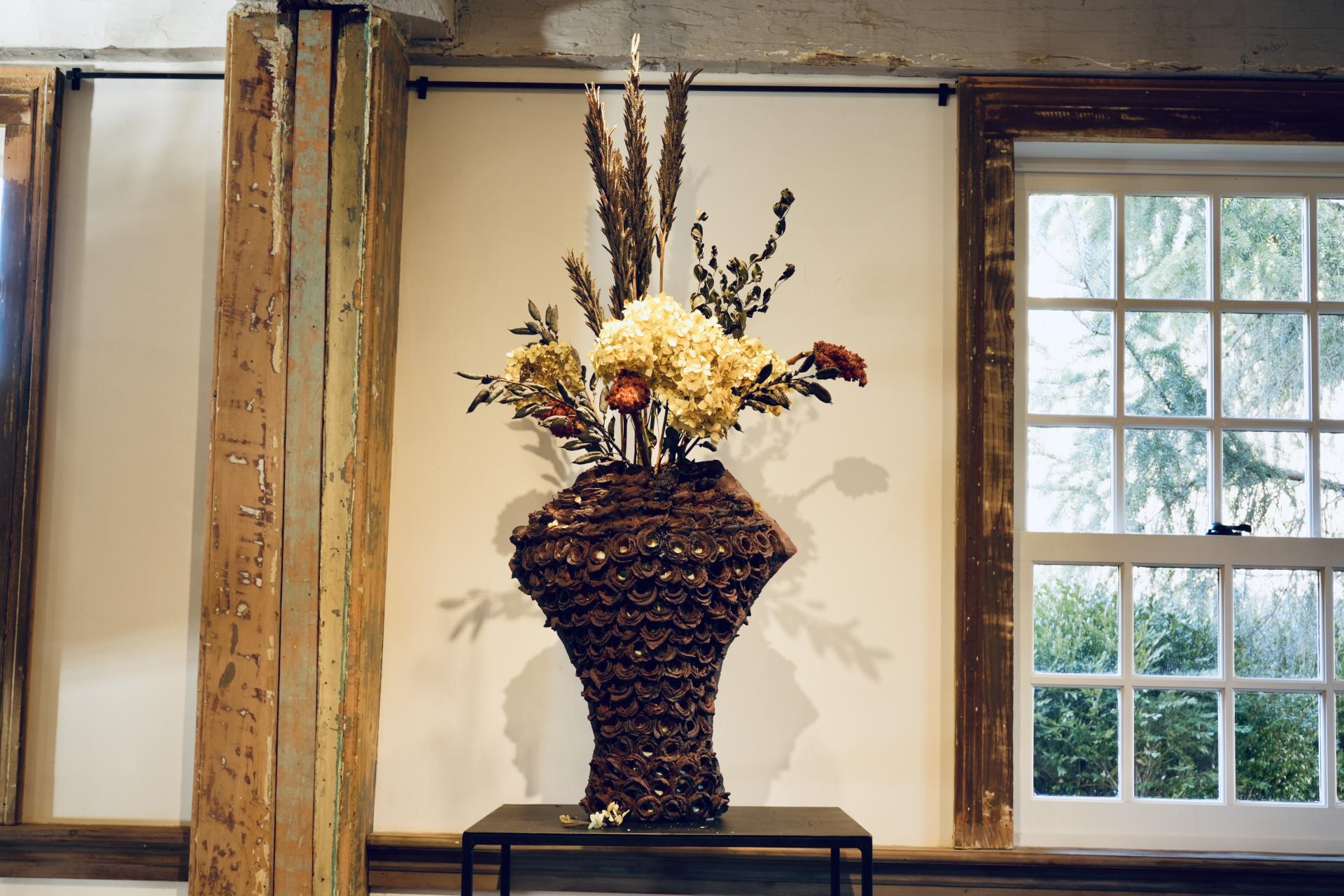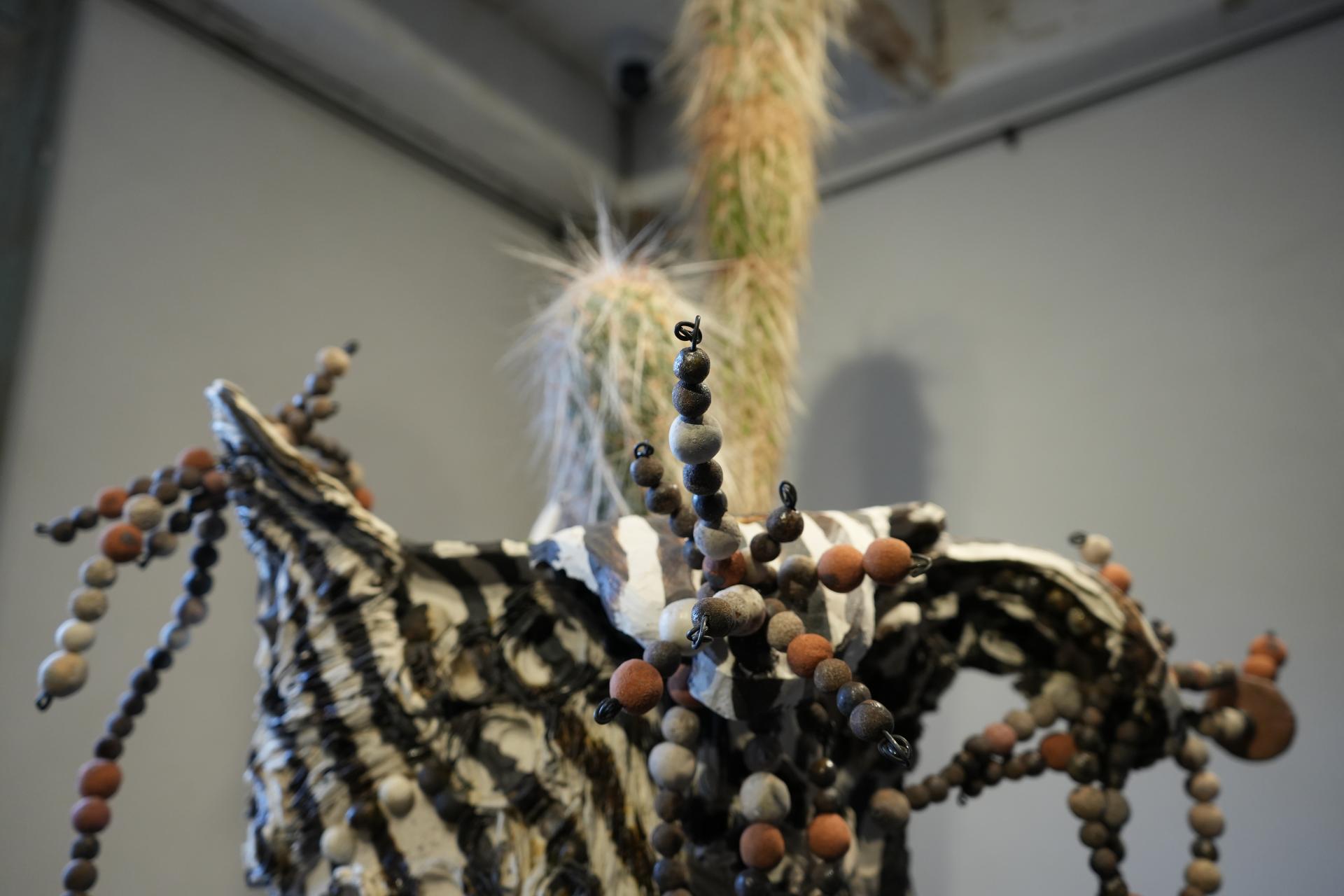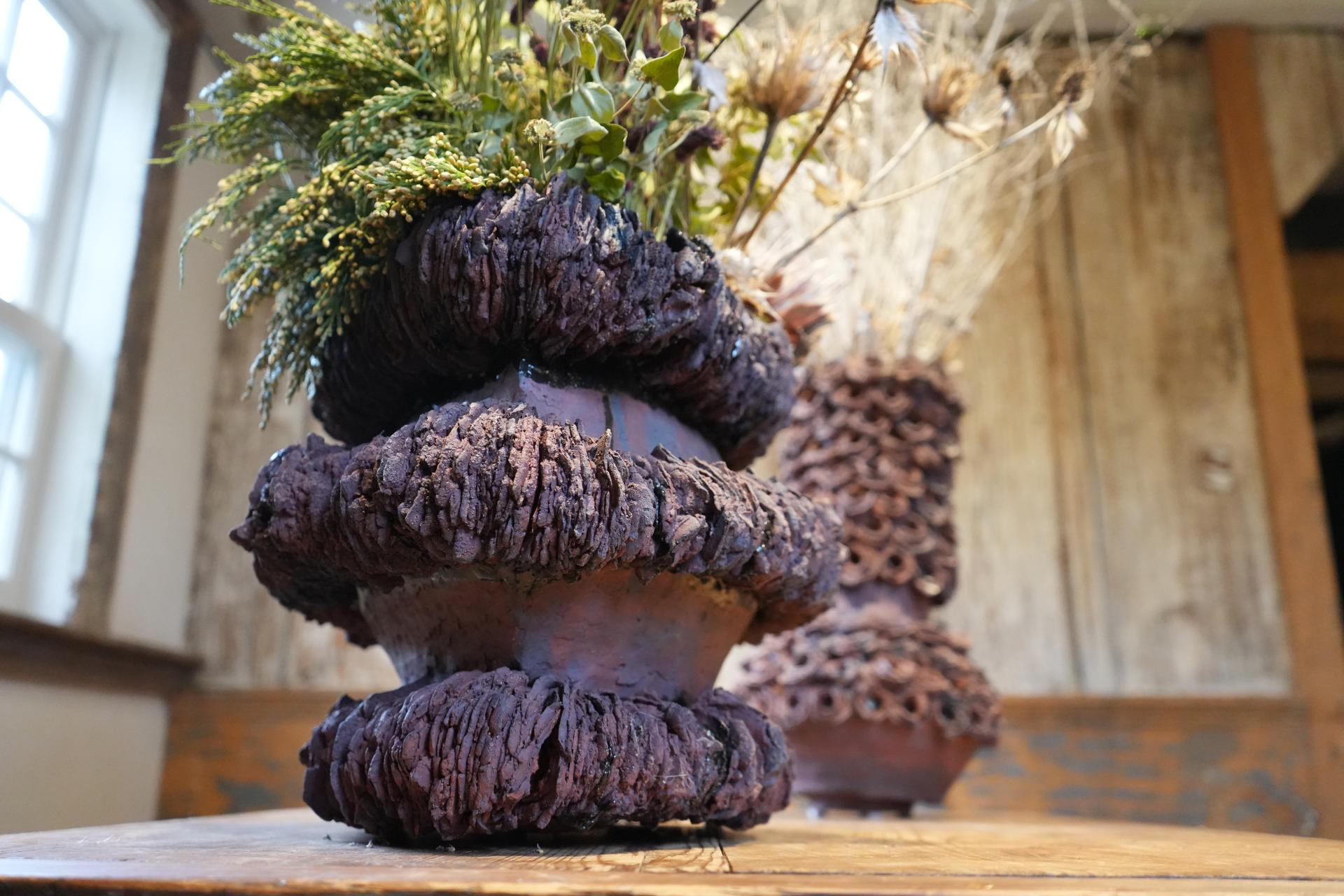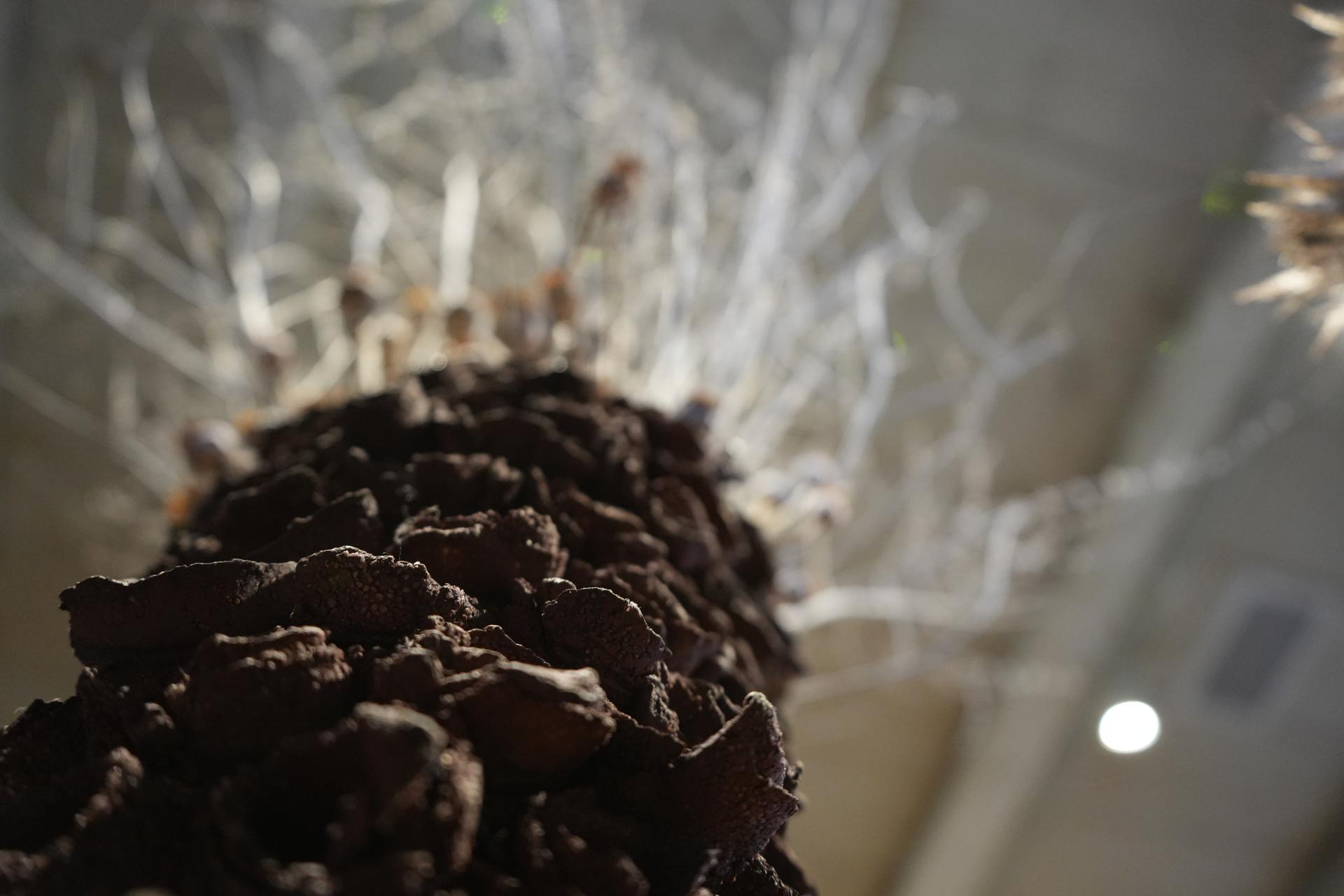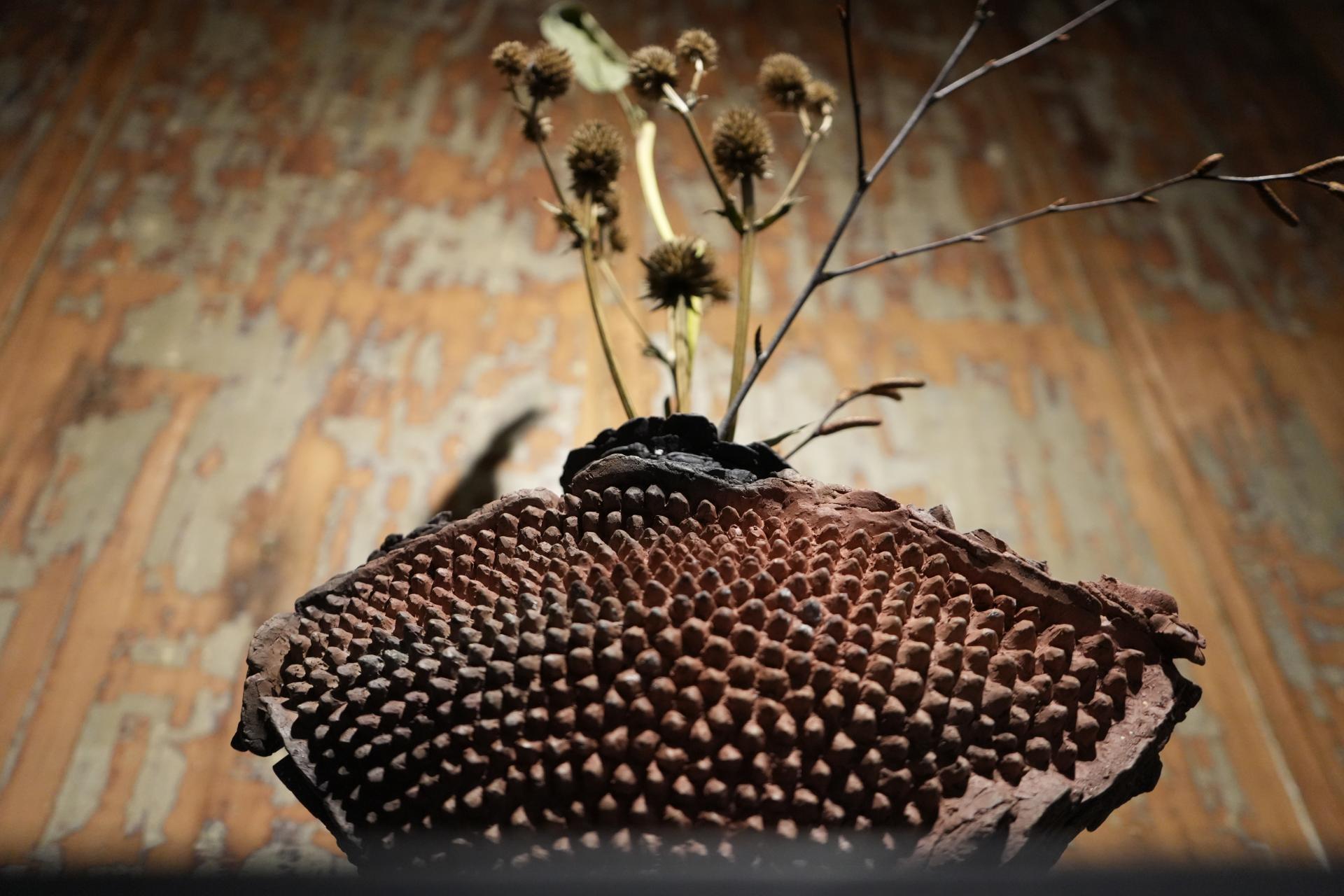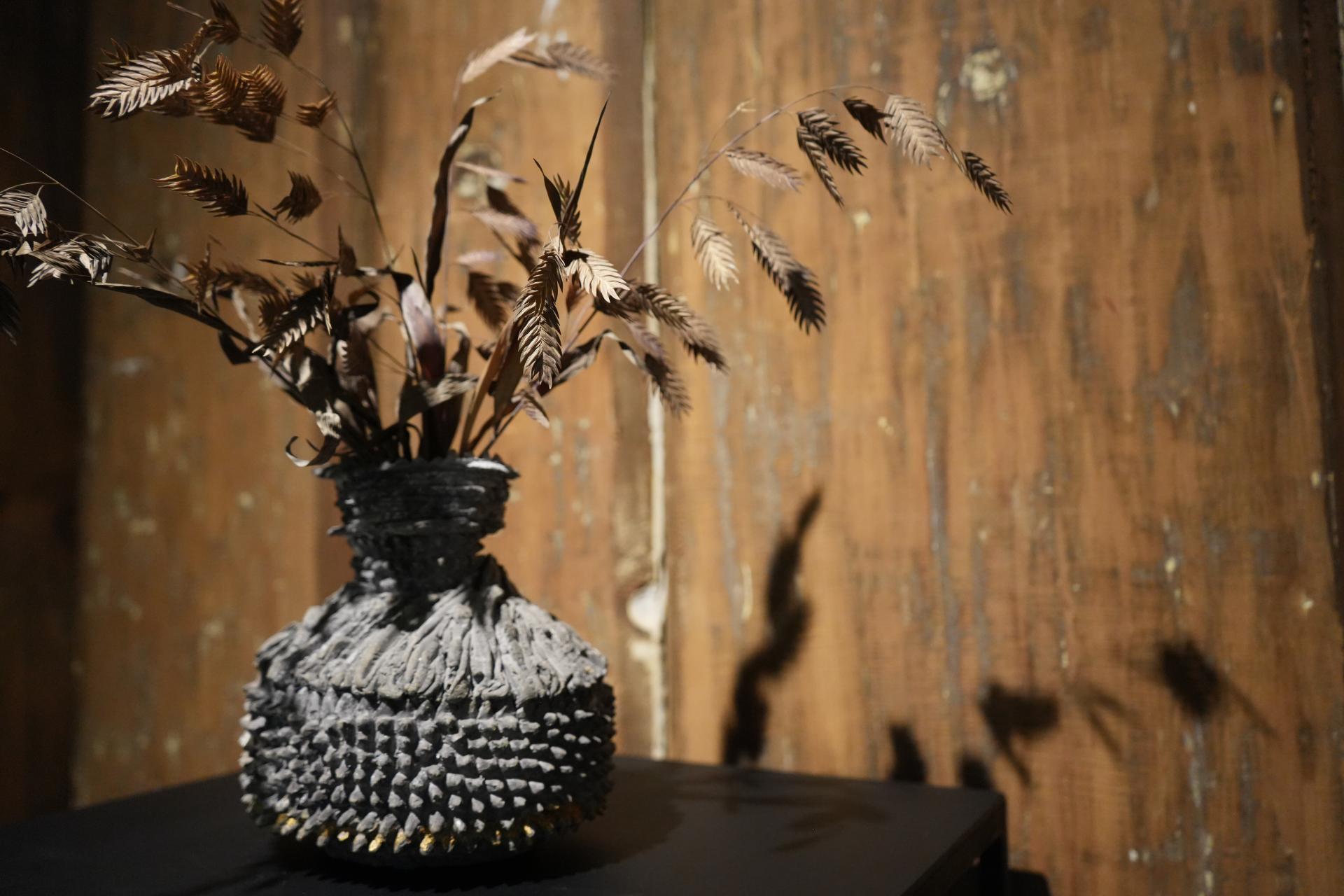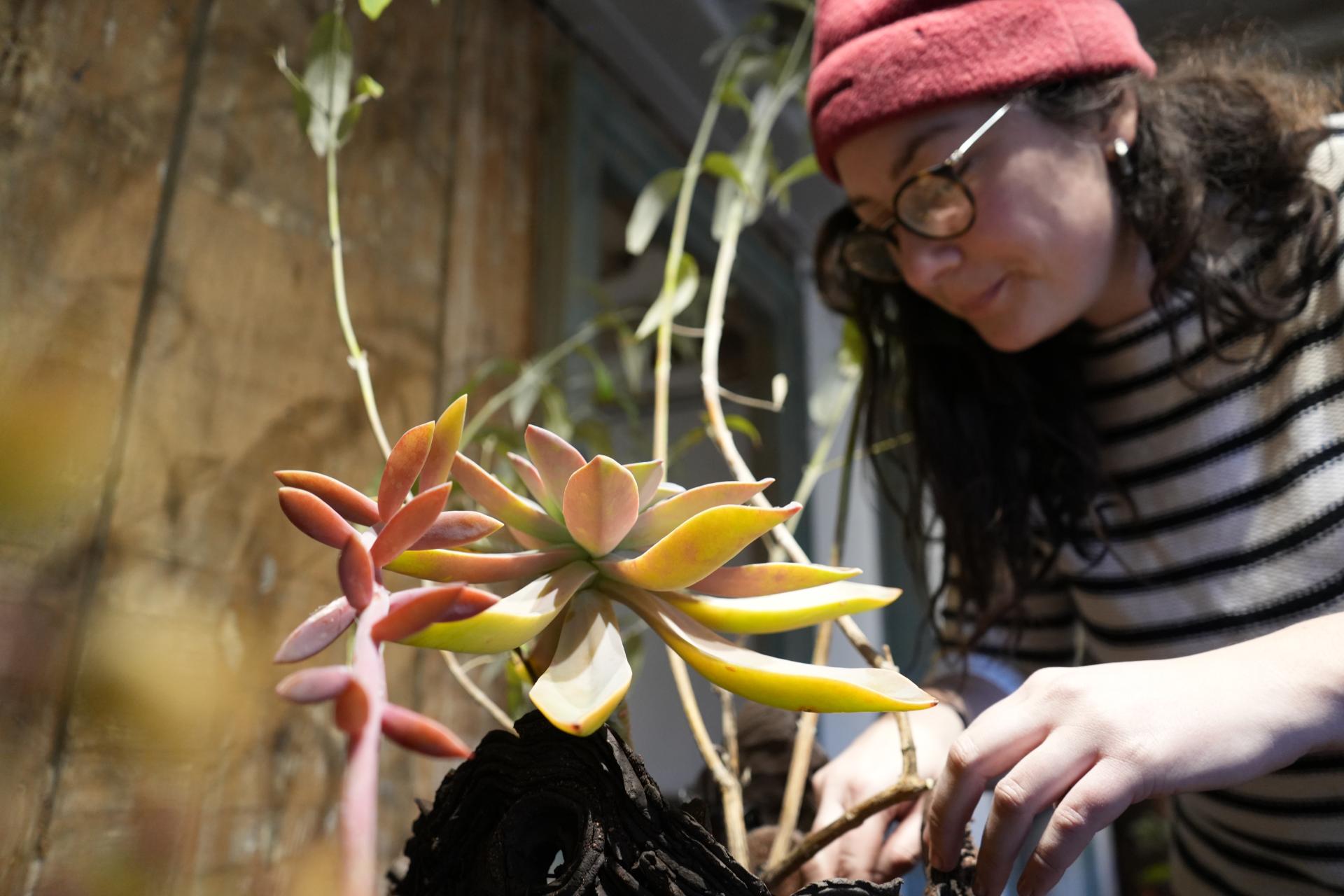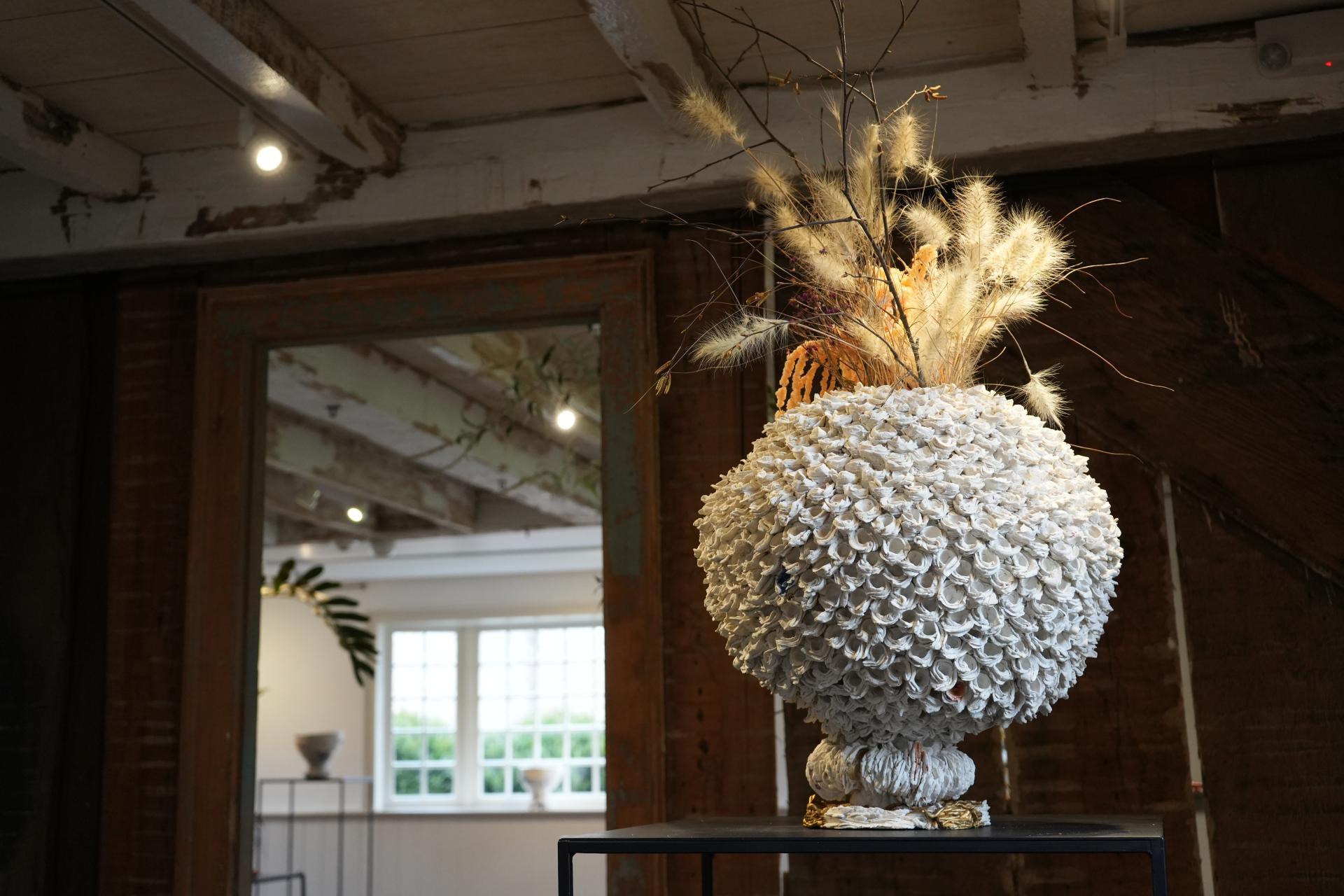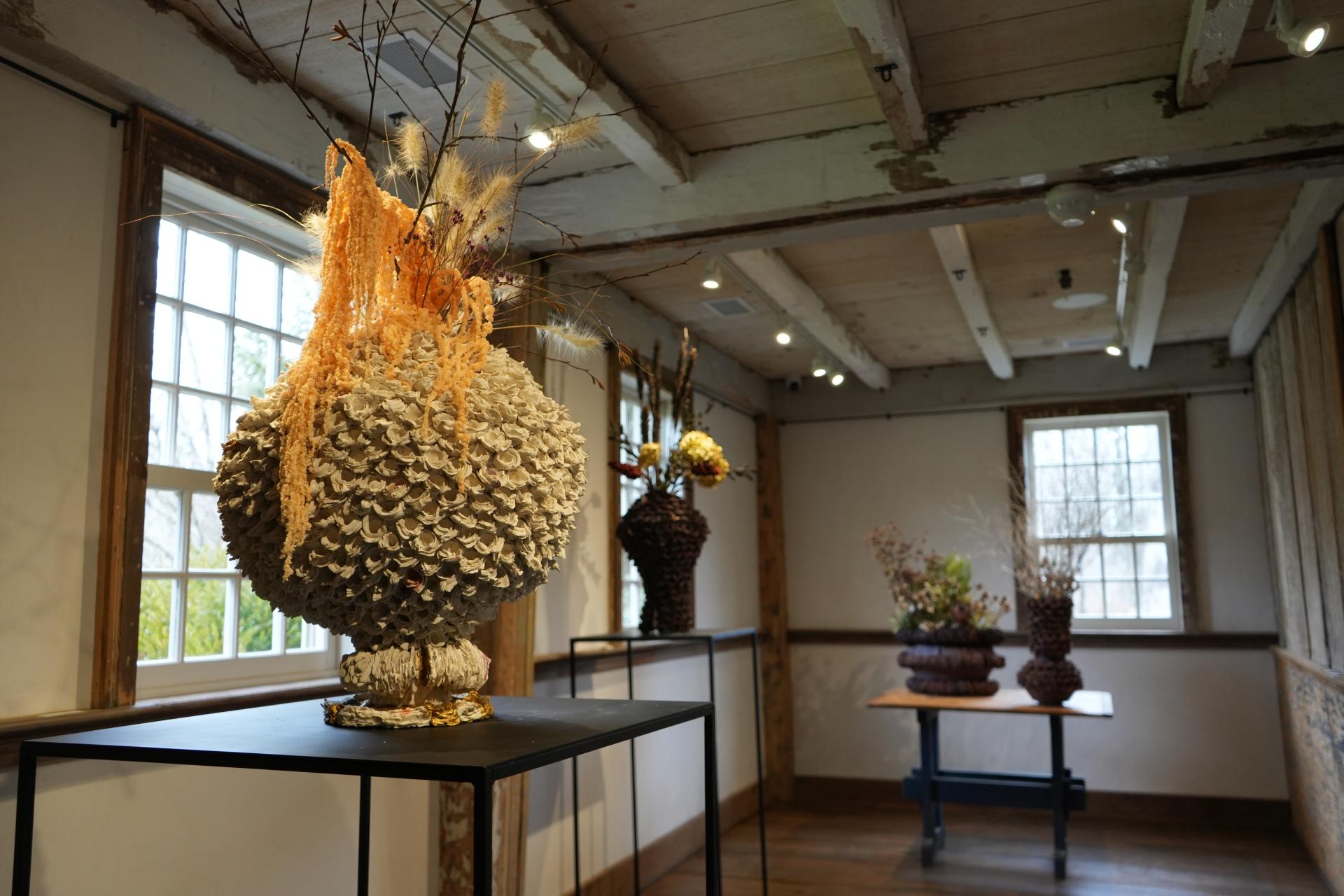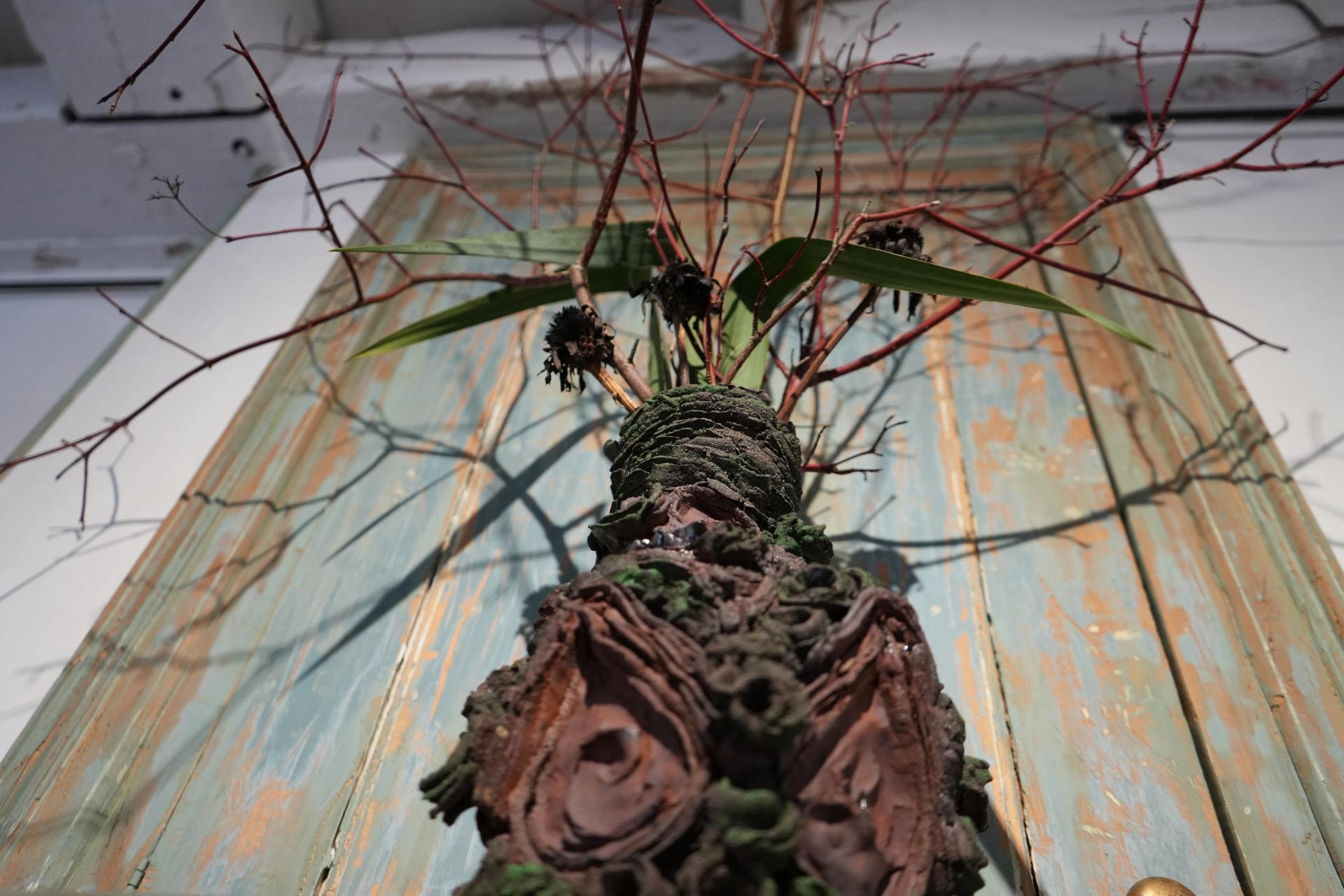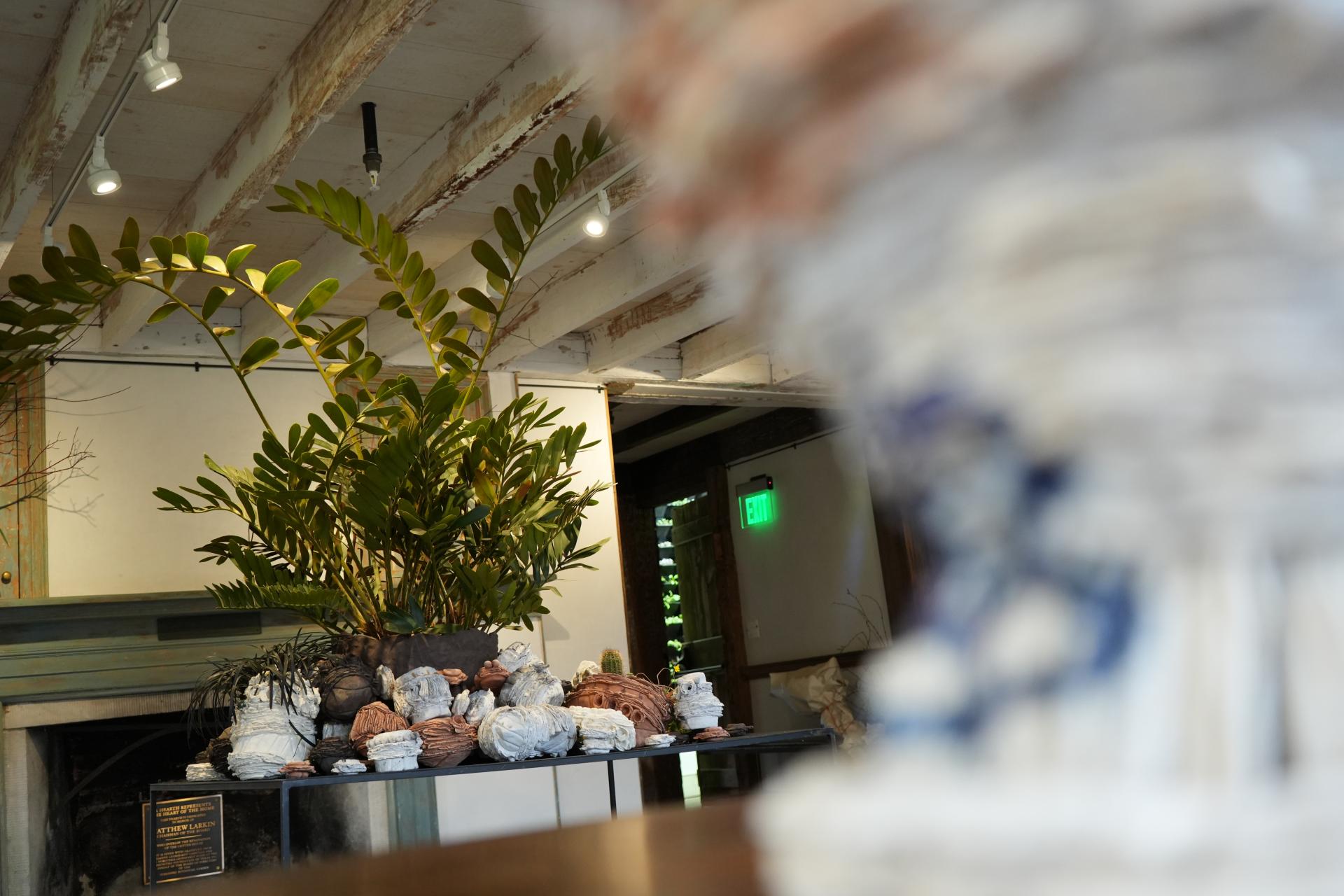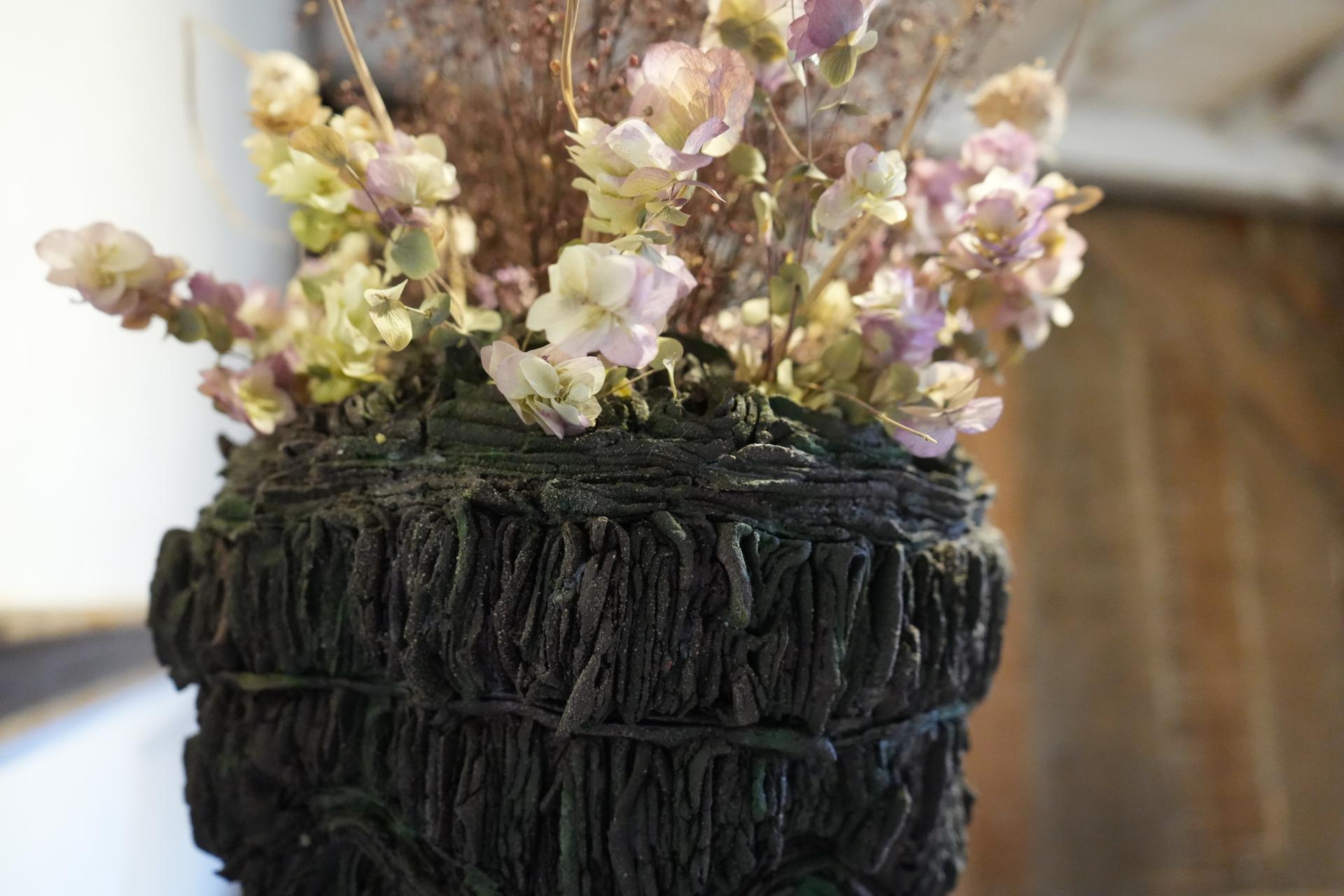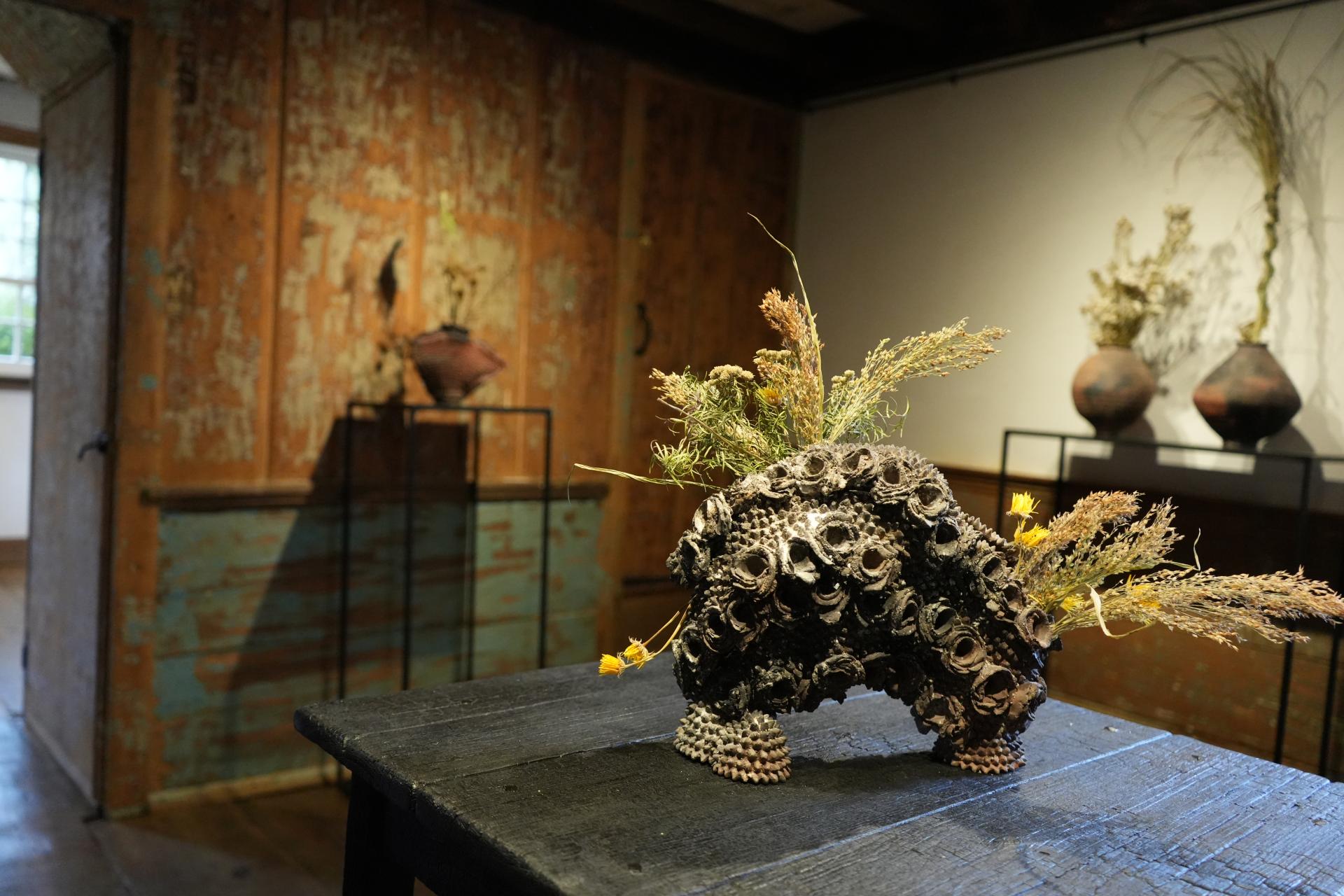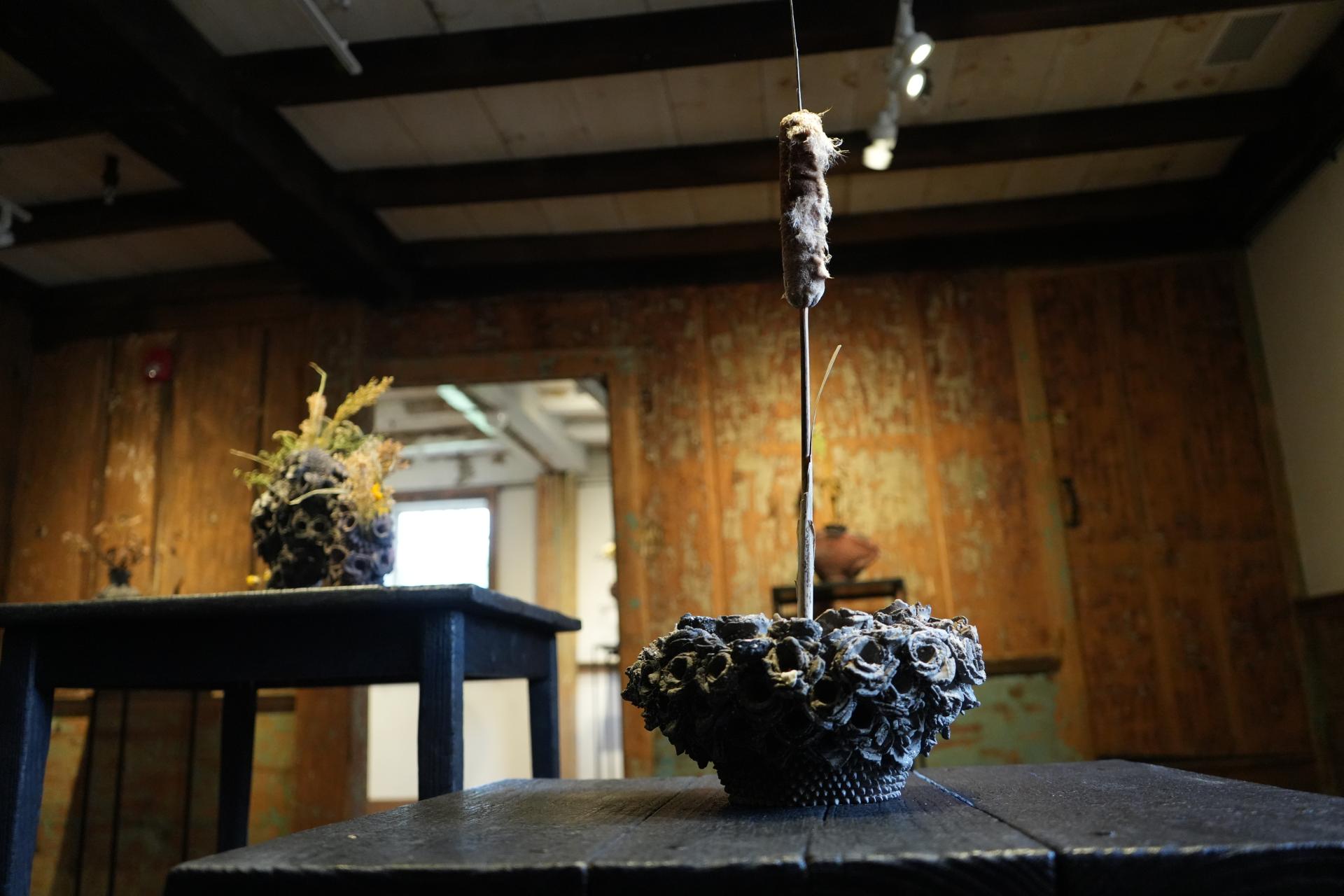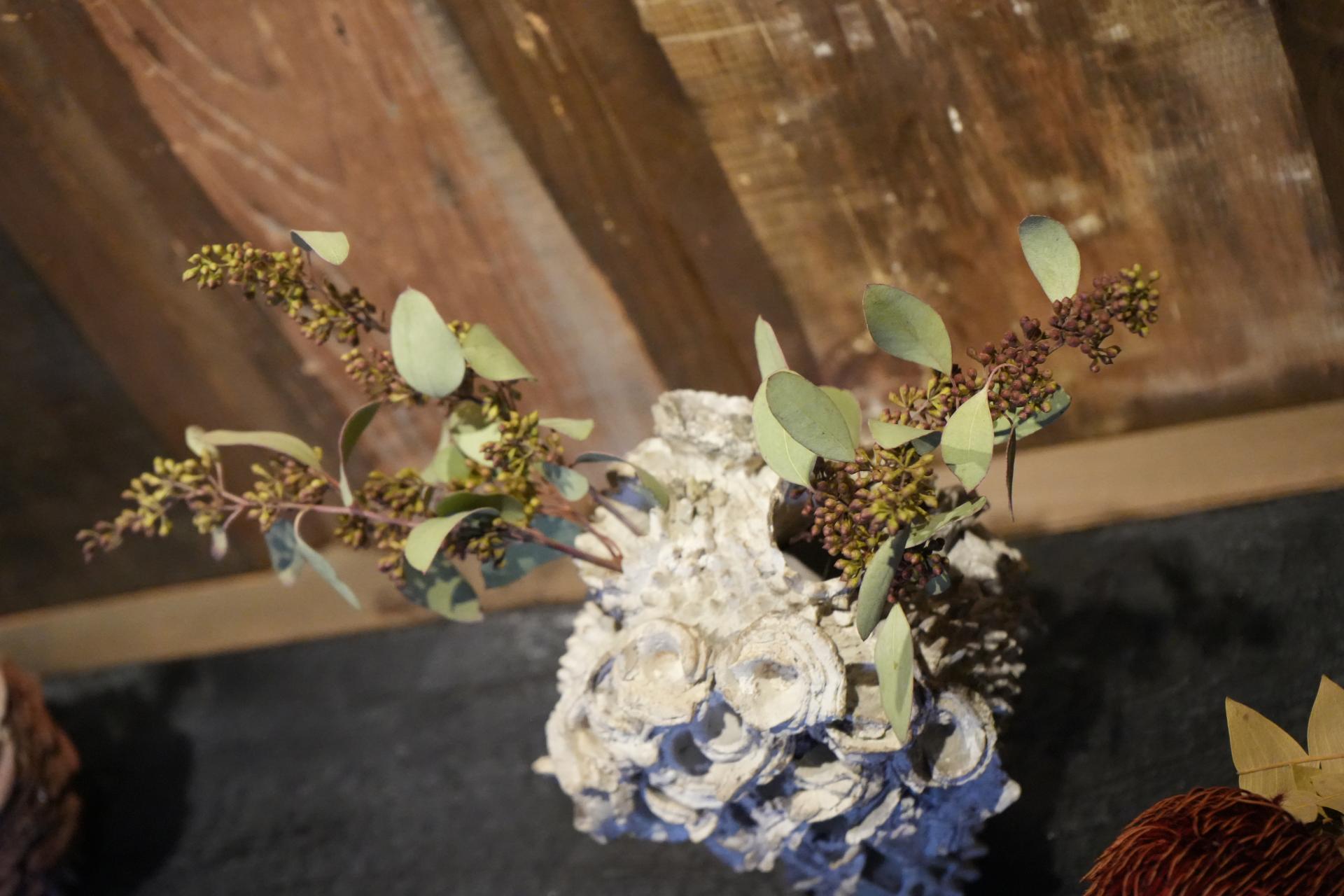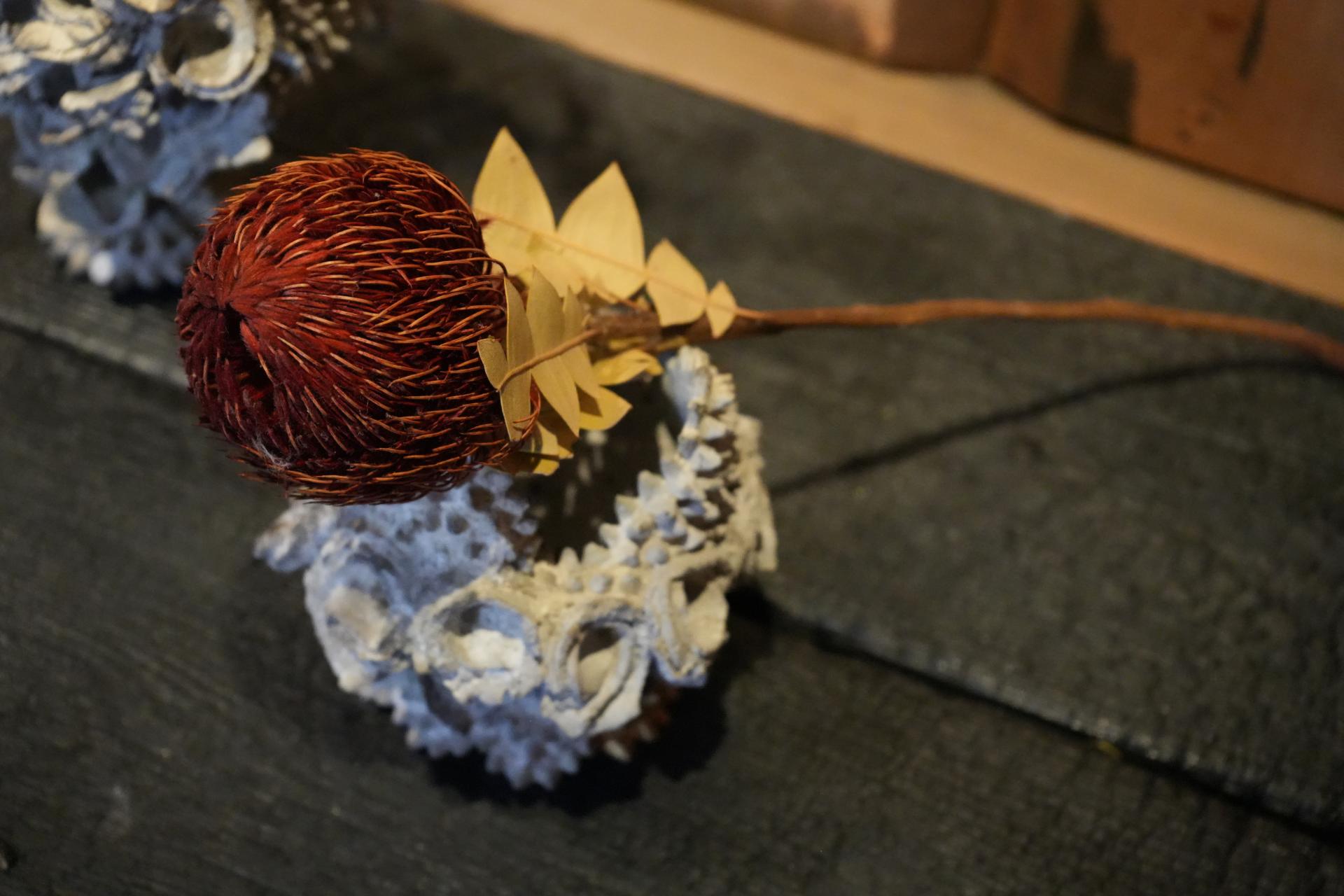You are here
Karlene Jean Kantner: Volumes
Karlene Jean Kantner: Volumes
Berkshire Botanical Garden's first art exhibition of 2023 features the ceramic work of Karlene Jean Kantner. The show, “Volumes,” includes dozens of her pieces that combine pit-fired ceramic pieces with cuttings from the Garden. It runs in the Leonhardt Galleries from Jan. 20 through Feb. 26.
The opening reception was held on Friday, Jan. 20. Kantner will give an artist talk in the gallery on Saturday, Feb. 11, at 3 p.m. Leonhardt Galleries are open from 11 a.m. to 3 p.m. on Tuesdays through Sunday. Admission is free.
Watch a video of Karlene explaining her work process.
“I’m thrilled. I’m flattered,” said Kantner, 32, a ceramic artist whose textured, painstakingly rendered works serve as objects to be venerated as much as they do vessels to hold plant life and floral design.
Raised in Montana, a denizen of the outdoors, Kantner began her artistic undertakings as a child making fresh batches of hand-pressed, sunbaked “mud cookies” that looked good enough to eat. After earning her Bachelor of Fine Arts at the University of Montana and teaching art to children for several years, she came East with her partner, Chris Powell, a West Stockbridge native.
Once settled in the Berkshires, among her first acts was digging out a pit fire oven — that is to say, an open-air fire pit about a foot-and-a-half deep by four-feet wide in which she bakes much of her artwork, turning clay to ceramic. Her pit-firing is limited to Massachusetts’ open-air brush-burning season (from Jan. 15 and May 1). The rest of the season, Kantner uses an electric kiln.
But she prefers the pit fire process, in which she places her clay creations directly onto burning coals before she slowly builds the fire again until it’s raging. The process requires care, patience and the thoughtful tolerance that everything could go horribly wrong. Indeed, not all pieces survive the firing process.
“My first lesson, really, in ceramics was how to accept loss and then relate it to your life,” Kantner said. “Yeah, there’s a lot of loss in ceramics.”
But over the years, she has learned to better control the merciless variables. “During the firing,” she said, “I need to pay attention to all of the signs that the pit is giving me.” Those signs include what the coals look like, their height in relation to the artwork and their temperature.
“The clay bodies,” she said, “once they start to glow a little bit, they glow orange and then they get hotter and hotter and turn white. There’s a particular smell that I look for.”
When she’s not engaged in artwork, Kantner often is engaged in gardening, a similar devotion full of hard lessons, trials and triumphs. Her gardening informs her art, and vice versa. Some of her garden harvest she’ll dry for use as decorative elements in future ceramic works.
As for her ceramics, she considers her individual works “sisters” of a kind, created under control and under chaos.
Like she did as a child, she rolls clay out into sugar-cookie-like sheets. But these days, from there, anything can happen. Her work, built by hand without the use of a wheel, becomes elaborate, sculptural, delicate, and whimsically asymmetrical. Textured with sand, it all still looks good enough to be eaten.
In October, Kantner was wandering Berkshire Botanical Garden doing the very thing she has done since she was a child: She was at purposeful play in the natural world. With the help of BBG Director of Horticulture Eric Ruquist, she was collecting end-of-season stalks, seed pods, grasses, and amaranth, all to be incorporated into "Volumes."
“I think that I’m more like my childhood self now than ever before,” she said.
Help Our Garden Grow!
Your donation helps us to educate and inspire visitors of all ages on the art and science of gardening and the preservation of our environment.
All Donations are 100% tax deductible.

